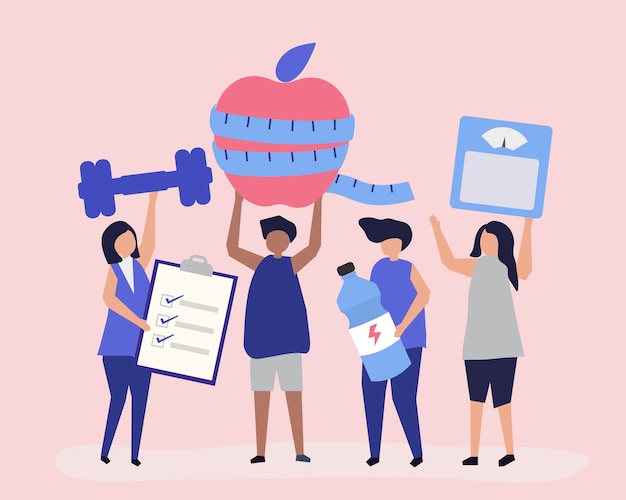
### What Are Calories?
Calories are something you hear about constantly, especially when you’re eating or thinking about weight. But do you really know what they are? Many people associate calories with gaining weight, but it’s not that simple. While eating too many calories can lead to weight gain, not consuming enough can push your body into “starvation mode,” making it hold onto weight instead.
At their core, calories are units of energy that your body uses to function. Think of them as fuel. When you eat food, you’re essentially consuming energy. One calorie equals 4.2 joules, which is the amount of energy needed to raise the temperature of water by 1°C. That’s why calories are vital—they power everything your body does to keep you going.
Dieticians often use the term “kilocalorie,” which equals 1,000 calories. This makes it easier to measure the energy content of food and the impact it has on the body. Some professionals also use “kilojoules” as a way to further refine measurements.
—
### Striking a Balance
Knowing how many calories you need to stay healthy or lose weight involves finding the right balance. You have to eat enough to maintain your energy, but eat slightly less than you burn each day to lose weight. This small calorie deficit prompts your body to use stored fat for energy, which helps shed excess weight.
Here’s a quick overview of how calorie intake works:
– **Maintenance**: You’re eating about the same number of calories as you burn daily.
– **Weight Gain**: You’re consuming more calories than you’re burning through activity.
– **Weight Loss**: You’re eating fewer calories while increasing your activity level.
To achieve this, it’s crucial to calculate how many calories your body needs based on factors like your weight, height, age, and activity level.
—
### How to Calculate Your Caloric Needs
To determine how many calories your body needs, you’ll first need to figure out your Basal Metabolic Rate (BMR). This number tells you how many calories your body burns daily just to function. Use these equations to calculate your BMR:
– **Women**:
BMR = 655 + (4.3 x weight in pounds) + (4.7 x height in inches) – (4.7 x age in years)
Example: For a 44-year-old woman who weighs 135 pounds and is 5’6” tall:
655 + (4.3 x 135) + (4.7 x 66) – (4.7 x 44) = 1,097 calories/day
– **Men**:
BMR = 66 + (6.3 x weight in pounds) + (12.9 x height in inches) – (6.8 x age in years)
Example: For a 45-year-old man who weighs 175 pounds and is 5’8” tall:
66 + (6.3 x 175) + (12.9 x 68) – (6.8 x 45) = 1,733 calories/day
Once you have your BMR, you’ll adjust it based on your activity level to calculate your total caloric needs:
– **Sedentary Lifestyle**: BMR x 1.2
– **Light Activity**: BMR x 1.3
– **Moderate Activity**: BMR x 1.4
– **Very Active**: BMR x 1.5
– **Extremely Active**: BMR x 1.6
For example, if the woman mentioned above has a moderately active lifestyle (BMR x 1.4), she would need roughly 1,500 calories a day to maintain her current weight.
—
### How Exercise Fits In
Exercise plays a key role in creating a calorie deficit. The more active you are, the more calories you burn, which helps with weight loss. But you don’t need to overdo it or starve yourself. Instead of cutting too many calories, just focus on boosting your activity level.
Here’s how activity levels translate into calorie consumption:
– **Sedentary Lifestyle**: Light everyday activities.
– **Lightly Active**: Walking, light household chores.
– **Moderately Active**: Jogging, moderate workouts.
– **Very Active**: Regular intense workouts or highly physical jobs.
– **Extremely Active**: Competitive sports or frequent high-intensity training.
By pairing exercise with a healthy diet, you’ll burn more calories than you take in, leading to gradual weight loss.
—
### The Path to Better Health
Reaching your ideal calorie intake is easy once you calculate your needs and prioritize healthier habits. To cut calories, avoid high-fat foods, sugary treats, processed snacks, and sodas. Instead, focus on fresh, whole foods by shopping the outer aisles of the grocery store, where fruits, vegetables, and lean meats are typically located.
With a few simple changes—like eating better and staying active—you’ll be well on your way to a healthier, more energized version of yourself.